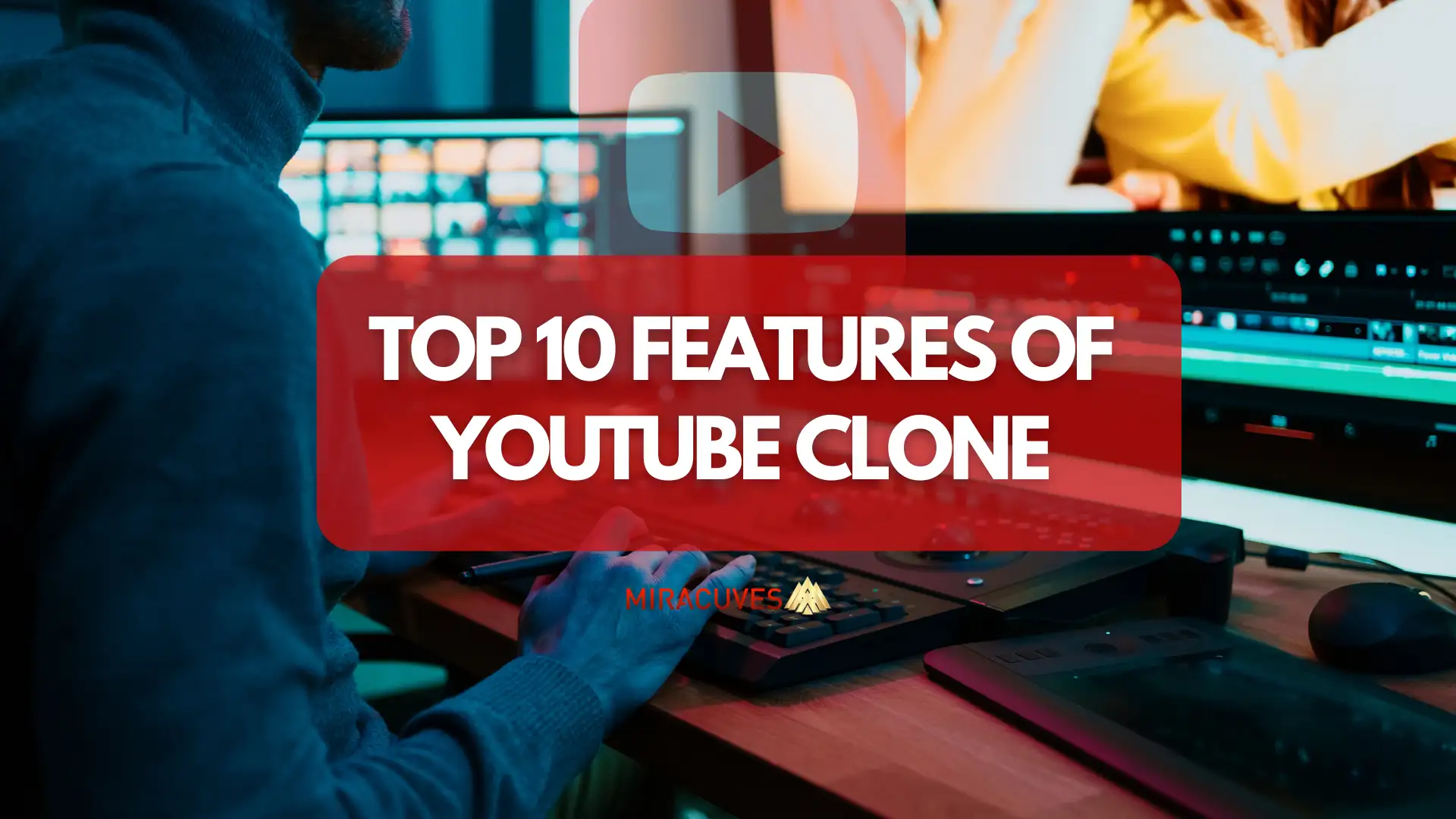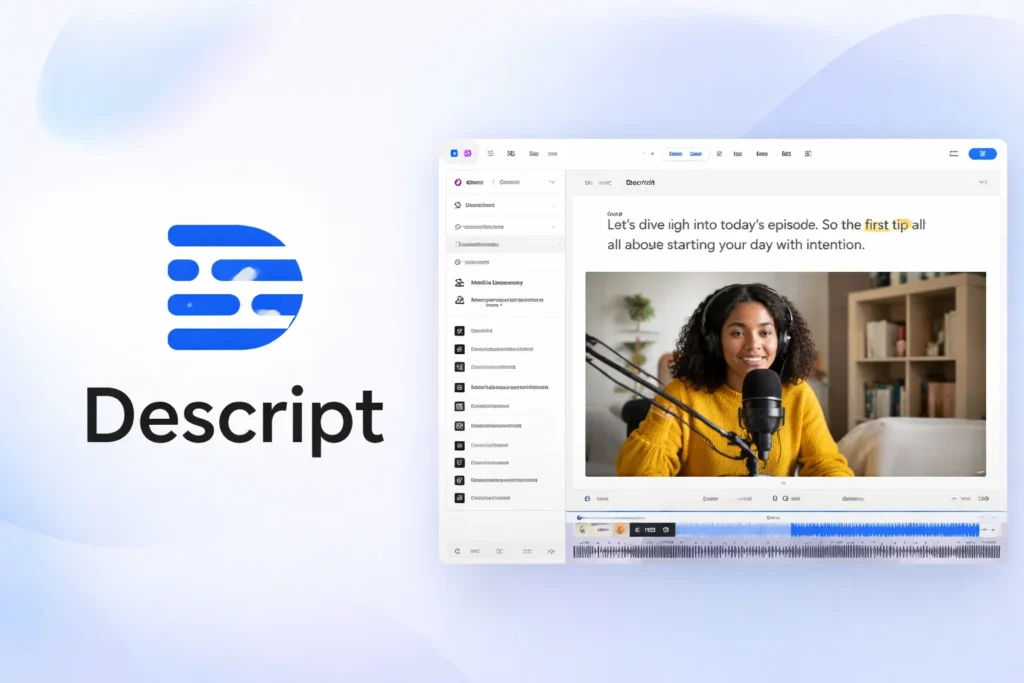In today’s digital world, video-sharing platforms have become a dominant force, with YouTube leading the charge. This has sparked the development of various YouTube clone platforms, giving aspiring entrepreneurs a chance to tap into the lucrative world of video streaming. However, building a YouTube clone is just the first step; ensuring its profitability through effective monetization strategies is critical to success.
In this guide, we’ll explore how to monetize your YouTube clone by leveraging ad revenue, subscriptions, pay-per-view features, and more. Whether you’re aiming to attract casual users or dedicated subscribers, multiple models can be tailored to fit your platform and audience. The goal here is to build a sustainable and profitable business using various revenue streams.
Understanding and implementing the right strategies for revenue generation for YouTube clones ensures long-term success, providing a stable foundation for both platform owners and content creators to thrive. Whether you’re considering ad models, freemium approaches, or premium content access, each method comes with unique advantages that can significantly boost your platform’s earning potential.
Why Monetization is Key for YouTube Clone Platforms
Monetizing a YouTube clone isn’t just a way to generate profit; it’s crucial for long-term sustainability. As video consumption continues to rise, platforms that fail to implement effective revenue generation strategies can quickly fall behind.
Monetization allows you to cover operational costs like hosting, content delivery, and maintenance, while also providing opportunities to grow and scale. Additionally, a solid monetization model benefits content creators, incentivizing them to produce high-quality content, which in turn attracts more users to the platform.
For example, the importance of generating revenue via ads, subscriptions, and other models lies in creating a continuous income stream that keeps both the platform and its creators thriving. This approach ensures your YouTube clone remains competitive in a crowded market, where audience engagement and content variety are key.
Furthermore, robust monetization strategies allow you to reinvest in platform development—enhancing features, optimizing user experience, and expanding your infrastructure to accommodate growing user demand. These factors contribute to long-term growth and sustainability, making monetization the linchpin for any successful YouTube clone platform.
Understanding Your Audience and Niche
A key factor in successfully monetizing your YouTube clone is a deep understanding of your target audience and niche. Different users have varying content preferences, spending habits, and engagement levels, and tailoring your monetization strategies to their behavior is essential.
For instance, platforms aimed at niche communities (such as gaming or educational content) may benefit from specialized monetization models like pay-per-view for exclusive tutorials or premium ad-free experiences. A broad, general audience might respond better to a freemium model, where basic content is free, but premium features come at a price.
Analyzing your audience’s needs and behaviors will help you choose the right monetization strategy, ensuring you provide value while maximizing your platform’s revenue potential.
Ad Revenue Models for YouTube Clones
Ad revenue is one of the most effective and widely used monetization methods for video-sharing platforms like YouTube. By integrating various types of ads—such as banner ads, pre-roll video ads, mid-roll ads, and sponsored ads—you can generate significant revenue based on user traffic and engagement.
One of the primary strategies is incorporating Google AdSense or similar ad networks, which offer a range of customizable ad formats. You can also opt for direct partnerships with brands for sponsored ads, which can often yield higher returns.
Ad models can be further enhanced by leveraging data analytics to show targeted ads based on user preferences and behavior, which increases click-through rates and engagement. Offering premium, ad-free subscriptions (such as what YouTube Premium does) can also create an additional revenue stream for users who wish to avoid ads.
While ad revenue is highly scalable, it’s essential to balance ad frequency with user experience. Too many intrusive ads can drive users away, so finding the right balance is crucial to maintaining user retention while maximizing ad income.
By integrating with platforms like Google AdSense, you can optimize your ad revenue models and ensure seamless ad delivery.
Subscription Models for YouTube Clone Platforms
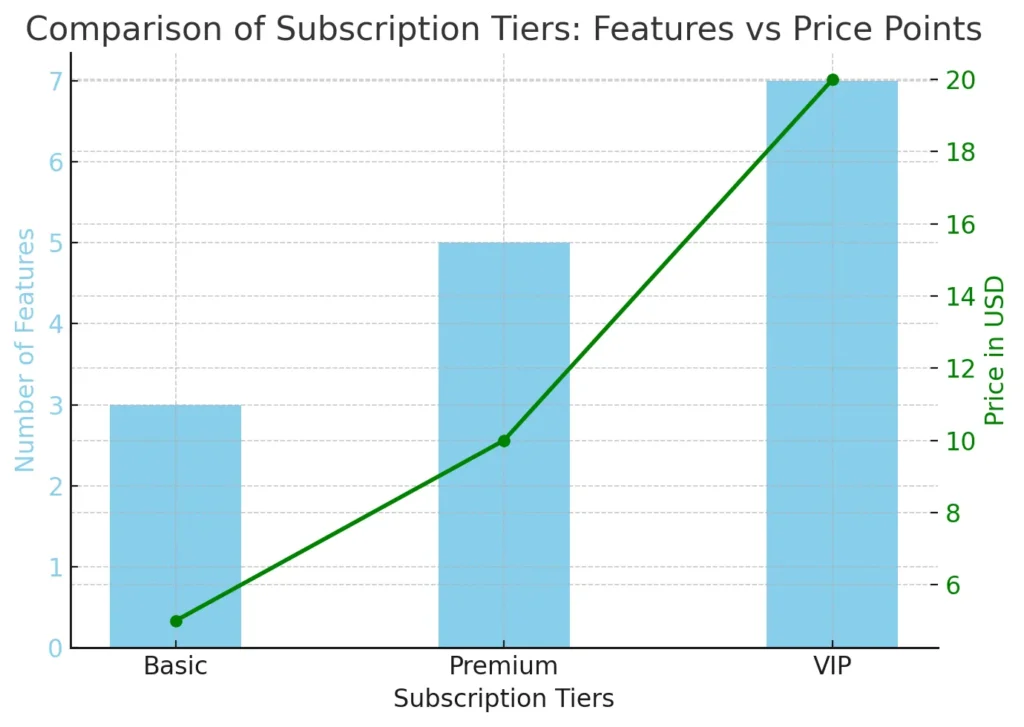
Subscription models offer a powerful way to generate consistent, predictable revenue by allowing users to pay for premium content or services on a recurring basis. Platforms like YouTube have successfully implemented tiered subscription models, with options ranging from basic ad-free viewing to exclusive content access.
For a YouTube clone, implementing subscription tiers (e.g., Basic, Premium, VIP) offers flexibility and value. The freemium model is particularly effective, where users get free access to core features but must pay for additional perks like HD streaming, exclusive content, or ad-free experiences.
By offering diverse subscription options, you can cater to different segments of your audience, ensuring that both casual users and dedicated subscribers find a model that suits their needs. Incorporating incentives, such as early access to content or special features for paying users, can also drive subscriptions and increase user retention.
Carefully managing and optimizing the subscription tiers and pricing structure will ensure your platform remains attractive while maximizing revenue potential.
In-App Purchases and Freemium Models
In-app purchases and freemium models offer flexibility for monetizing a YouTube clone, particularly for platforms that want to attract users with free content and later monetize premium features. With the freemium model, users can enjoy free access to the core content or features, but additional features, like exclusive content, higher video quality, or advanced functionalities, are available for purchase.
In-app purchases can be used for features such as:
- Virtual gifts for content creators
- Access to special content (early releases, premium shows)
- Customization options (themes, emojis)
This model not only enhances user engagement but also encourages gradual spending, as users often opt for microtransactions for specific features. Many platforms successfully drive revenue through this method by keeping the free experience enjoyable but offering tempting paid enhancements.
Freemium models also allow for incremental growth in user base, providing a clear upgrade path for casual users to become paying customers. It helps lower the barrier to entry, enabling more users to try your platform, and you can later convert them into paying customers with exclusive content or features.
Pay-Per-View Features
The pay-per-view (PPV) model is an excellent option for monetizing exclusive content on your YouTube clone. This model allows users to pay a one-time fee to access specific videos or live events, such as concerts, webinars, or special episodes.
This strategy works particularly well for high-value or time-sensitive content. By offering a pay-per-view option, you can generate additional revenue without requiring users to commit to a full subscription. It also appeals to users who prefer to pay only for the content they are most interested in.
Successful examples include platforms that use this model for live sports events, premium shows, or limited-release movies, which cater to audiences willing to pay a premium for exclusive access. Implementing PPV can be an effective way to capitalize on highly anticipated or unique content that attracts a specific segment of your audience.
By integrating this feature, you create an additional revenue stream that complements other models like ad revenue and subscriptions, making your platform more versatile and capable of maximizing income across various user preferences.
Legal and Licensing Considerations
Monetizing a YouTube clone comes with several legal and licensing hurdles that must be addressed to avoid potential liabilities. Video-sharing platforms are prone to copyright violations, and it’s crucial to establish strict content policies to protect both the platform and its users.
Platforms should consider implementing tools that monitor and flag copyrighted content and develop guidelines that ensure compliance with intellectual property laws. Additionally, partnering with legal professionals to draft comprehensive terms of service and privacy policies helps mitigate risks associated with content distribution, user data, and ad policies.
Failure to adhere to these legal guidelines can result in hefty fines, platform shutdowns, or user lawsuits. Thus, ensuring compliance from the outset is key to sustainable monetization.
Technical Requirements for Implementing Monetization
| Monetization Feature | Technical Integration | Example Tools/Services |
|---|---|---|
| Ad Revenue | Ad platform integration (AdSense) | Google AdSense, AdMob |
| Subscriptions | Payment gateway, subscription management | Stripe, PayPal |
| In-App Purchases | In-app purchase system integration | Apple Pay, Google Pay |
| Pay-Per-View | Secure content delivery, paywall | Vimeo OTT, JW Player |
Implementing monetization strategies on a YouTube clone requires a robust technical infrastructure. This includes integrating payment gateways for subscriptions, in-app purchases, and pay-per-view services. Popular payment gateways like Stripe, PayPal, or other regional solutions should be considered to cater to a global audience.
Additionally, for ad revenue models, integrating with ad networks such as Google AdSense is essential. The platform must also feature a seamless content management system (CMS) to organize and deliver premium or gated content efficiently. Finally, you’ll need to ensure your platform can handle large-scale video uploads and streaming, requiring scalable cloud storage and content delivery networks (CDNs).
Technical compliance with data protection laws (e.g., GDPR) is also crucial, especially when handling user payment and personal data, to avoid legal complications and build trust with your audience.
Using reliable payment gateways like Stripe can ensure secure transactions for subscriptions and in-app purchases.
Curious about monetizing your own video platform?
We build video-sharing apps with ad support, subscriptions,
and secure streaming. Engage audiences
and grow revenue.
User Engagement and Retention Strategies
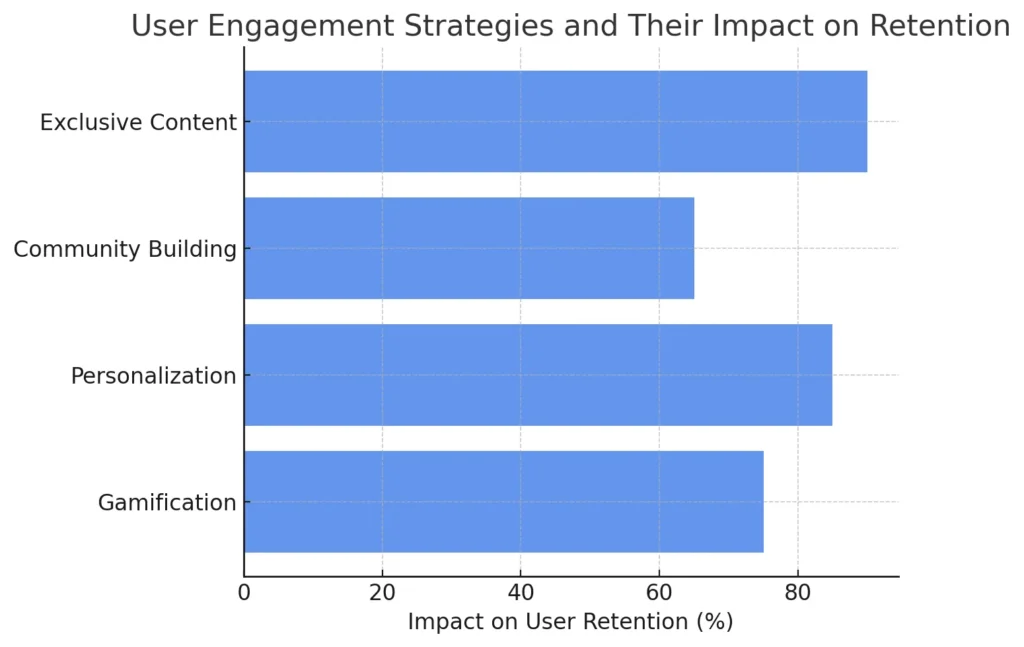
User engagement is critical for sustaining long-term monetization on a YouTube clone. By building features that foster community interaction, such as comment sections, live chats, and user-generated content options, you encourage ongoing participation and return visits.
Gamification, like badges or rewards for loyal users, can further boost engagement. Personalization through recommended content based on users’ watching history also increases retention, keeping users immersed in your platform longer.
Retention is essential for monetization since it leads to higher ad views, subscription renewals, and in-app purchases, ensuring steady revenue streams.
Challenges in Monetizing a YouTube Clone
Monetizing a YouTube clone comes with several challenges. One major hurdle is managing ad-blockers, which can significantly reduce ad revenue. Additionally, balancing a freemium model can be tricky, as you need to offer enough value in the free version to attract users while still encouraging them to upgrade to paid tiers.
Content moderation is another challenge, as you’ll need to ensure compliance with legal standards, prevent copyright violations, and maintain a safe environment for all users. Addressing these challenges is key to successful monetization.
Competitive Analysis
A key step in monetizing a YouTube clone is understanding what competitors are doing. Analyze how successful video-sharing platforms monetize their content through ads, subscriptions, and exclusive content. Platforms like Vimeo, Dailymotion, and others may offer unique insights into what works in your niche or market.
By conducting this analysis, you can identify gaps or opportunities that can differentiate your platform, allowing you to implement innovative monetization models or tweak existing ones to better serve your users and stand out in a competitive landscape.
Maximizing Revenue Through Multiple Monetization Streams
| Monetization Model | Revenue Potential | User Engagement | Key Considerations |
|---|---|---|---|
| Ad Revenue | High with high traffic | Moderate | Requires balancing ad frequency and user experience |
| Subscription Tiers | Recurring revenue | High | Requires offering compelling premium features |
| In-App Purchases | Moderate to High | High | Best for incremental or freemium models |
| Pay-Per-View | Event-driven revenue | Moderate | Works best for exclusive or high-value content |
The key to sustained profitability for your YouTube clone is diversifying revenue streams. By combining ad revenue, subscription models, in-app purchases, and pay-per-view features, you can cater to different user segments and maximize your platform’s earnings. Each model has its own strengths, but together they create a well-rounded strategy that captures a wider range of user preferences and behaviors.
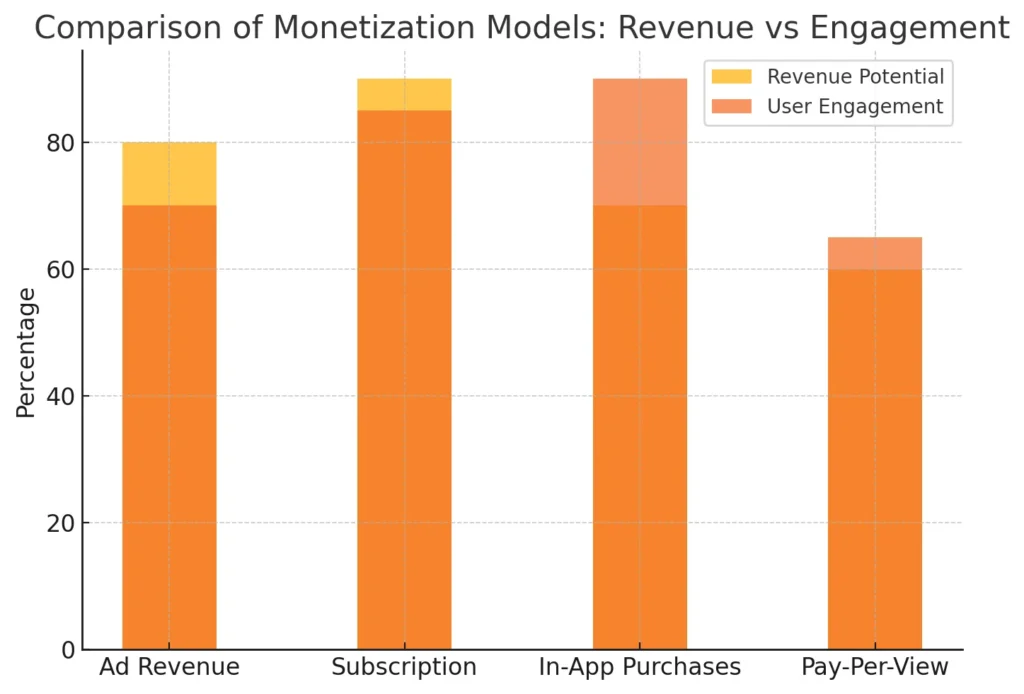
Diversifying ensures that you’re not reliant on one income source and provides flexibility in adapting to market shifts or user demands.
Conclusion
Monetizing a YouTube clone successfully requires a comprehensive approach that includes a variety of revenue streams such as ads, subscriptions, pay-per-view, and in-app purchases. Each method offers unique benefits, and by understanding your audience, addressing legal and technical requirements, and learning from competitors, you can create a platform that not only attracts users but also sustains long-term profitability. Diversifying your monetization models is essential to ensure that your platform remains adaptable, competitive, and lucrative over time.
Looking to create a highly profitable YouTube clone with top-tier monetization strategies like ads, subscriptions, and pay-per-view? Miracuves specializes in building robust, feature-rich platforms designed for success. Our team provides end-to-end solutions, from development to deployment, ensuring your platform has all the tools it needs to thrive in today’s competitive market.
Contact us today to get started and turn your vision into reality with a sustainable and scalable video-sharing platform.
Visit Miracuves.com for more information!
Dreaming of your own YouTube-like platform?
We build video apps with monetization options, engagement tools, and smooth streaming. Launch your platform with confidence.
FAQs
How can I monetize my YouTube clone platform?
You can monetize your YouTube clone through ad revenue, subscription tiers, pay-per-view events, in-app purchases, and freemium models. Each method offers unique benefits and revenue potential depending on your audience’s needs and engagement level.
What are the best ad revenue models for YouTube clone platforms?
The best ad revenue models include banner ads, pre-roll/mid-roll video ads, and sponsored content. Integrating with ad networks like Google AdSense ensures you maximize ad earnings while maintaining user experience.
What is a freemium model, and how does it work for YouTube clones?
A freemium model offers users free access to basic content while charging for premium features like exclusive videos, higher video quality, or ad-free viewing. This model helps attract users initially and gradually convert them into paying subscribers.
What is the role of subscriptions in monetizing a YouTube clone?
Subscription models generate recurring revenue by offering users different tiers (e.g., Basic, Premium, VIP). Users pay for perks like ad-free content, exclusive access, or early releases, helping you create a loyal paying user base.
How do pay-per-view features work for a YouTube clone platform?
Pay-per-view allows users to pay a one-time fee for access to specific premium content, such as live events or exclusive shows. It’s ideal for time-sensitive or high-value content that generates immediate revenue.
What technical requirements are needed to implement monetization on a YouTube clone?
Monetization requires integrating payment gateways (e.g., PayPal, Stripe), ad networks (e.g., AdSense), and secure content delivery systems for pay-per-view. Additionally, ensure a scalable infrastructure to handle traffic and content streaming.
Check out our popular video content app solutions offered by Miracuves – built for performance and scale:
- TikTok Clone Experience – Short-form video sharing with viral potential, interactive features, and easy content creation
- Netflix Clone Experience– Seamless streaming with an intuitive interface, offering high-quality video delivery
- YouTube Clone Experience – A versatile platform for video uploads, views, and social engagement
- Amazon Prime Video Clone Experience – A premium on-demand video app that delivers high-quality series, movies, and originals.



